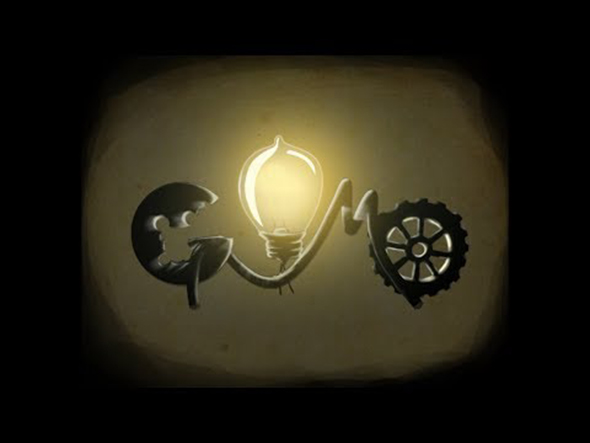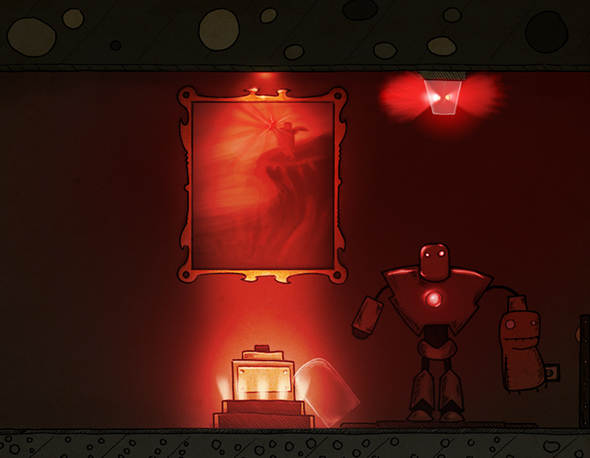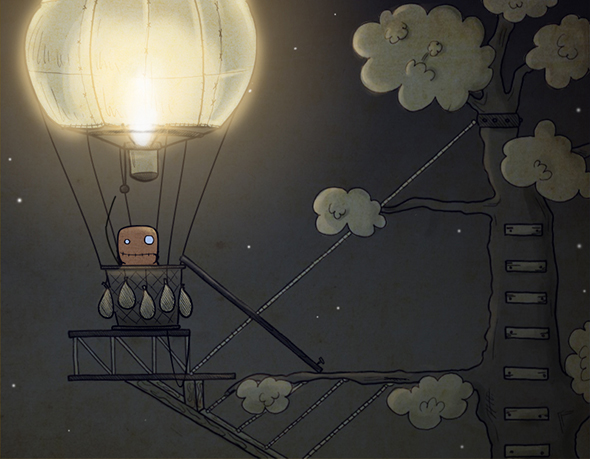
Developer: Fishcow Studio
Publisher: Daedalic Entertainment
Platform: Mac, PC
Gomo – Review
There’s a lot to say about point & click games. For one, it’s a genre that has been virtually dead until recent successes from studios like Daedalic Entertainment and Telltale Games reinvigorated the genre.
One thing these kinds of games often succeed in, is introducing the beauty and splendour of hand-drawn art, something that’s not always as prevalent in our modern gaming industry.
Gomo is such a title, at times seeming like an animated short movie. The question is if it is unique enough for a genre that’s once more growing increasingly crowded.
Story
Gomo’s story keeps things simple. You’re loyal canine friend was kidnapped by an extraterrestrial, who demands a glowing red crystal in exchange.
Immediately Gomo sets off to to rescue his pet from grubby alien tentacles, a journey that sees him controlling robotic mining equipment and knocking down robot guards. He even takes to otherworldly sceneries at times.
The plot’s flimsy though, offering little to no explanation about why things play out the way they do. Instead it relies on slapstick – a.k.a. comedy gold – to try and reel you in.
Graphics
Gomo’s hand-drawn world is filled to the brim with details. It’s an exceedingly stylistic and cutesy affair that reminded me of an animated short, the kind you often see doubling as both a humoristic time-waste and an attempt to adultify cartoons.
It’s all charming to look at, although the game would have benefited from a larger array of colours.
Sound
Gomo’s music sounds refreshing at first, as it employs various unusual instruments – bells for instance – to add to its soundtrack.
It’s a score I’d see myself listening outside of the game, if only it wouldn’t loop so often. This repetitiveness is brought even more to the foreground thanks to Gomo’s short length. A shame, because there’s certainly potential a plenty.
Gameplay
Sadly, its gameplay is where Gomo falls flat on its back. While trying to save his dog from an invading alien, our protagonist has to solve several puzzles. Instead of the collect-a-ton that most point & click games amount to, Gomo instead keeps its puzzles one-screen-affairs.
Essentially this means that on every screen there are a few objects that you’re able to click on, some add themselves to your inventory – a handy zipper on Gomo’s back – while others are there to interact with. Those last objects could need a certain item before you’re actually able to use them, or they could be doors that simply require a button press to open.
It is all very straightforward. Too much so, as it’s almost impossible to get stuck while searching for clues on what to do next.
Yes, you can disable the auto-enabled easy mode, which means Gomo turns into a pixel hunt. No reason for that though, unless it’s to appeal to a hidden masochistic streak.
With little in the way of real progress to make, you’d expect some clever puzzles to keep you busy during the one-and-a-half hour Gomo takes to complete. You’d be wrong, as there aren’t many riddles that can’t be solved by one or two quick glances.
Conclusion
Gomo is a game that looks and sounds charming, but lacks the depth necessary to really hit the mark. Instead you get an uninspired, interactive cartoon that fails to challenge you in any way.







No Comments